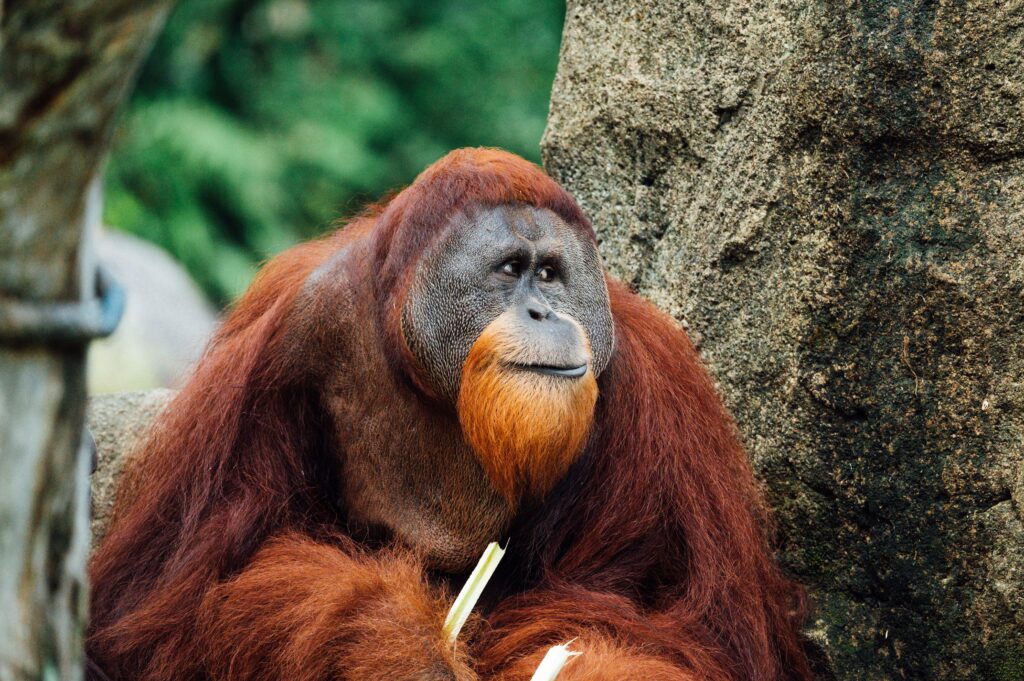
So, here we go again…intertwining seemingly unrelated topics — creativity and innovation and orangutans — into an interesting blog.
Over the years, as my readers know, I’ve discussed different approaches to innovation and creativity. My recent octopus blog fell into this category; now, we have lessons from orangutans. By the way, I’m not sure where my current animal obsession stems from. I have never had any pets (except for a salamander now and then I found while camping).
To begin we need to understand the orangutan. The Orangutan Foundation International shares these details:
- In Malay orang means “person” and utan is derived from hutan, which means “forest” thus, orangutan literally means “person of the forest.”
- There are three species of orangutans commonly known as the Bornean orangutan (Pongo pygmaeus), Sumatran orangutan (Pongo abelii) and the recently discovered Tapanuli orangutan (Pongo tapanuliensis).
- Orangutans belong to the great ape family, along with gorillas, chimpanzees, bonobos, and humans. The orangutan is Asia’s only great ape, and one of humankind’s closest relatives. We share 97% of the same DNA!
- Orangutans live only on the islands of Borneo and Sumatra in South East Asia.
Here’s some other good stuff. Out of all the great apes, baby orangutans spend the longest time with their moms — up to nine years!
The Creativity and Innovation of This Species
Orangutans have learned to be creative and problem solve in the wild. Then, they pass their cultural knowledge on to younger generations. One example: from generation to generation orangutans are taught how to make “umbrellas” out of leaves to protect themselves from the rain. They are material scientists weaving nests to get a comfortable sleep!
After all, we all know we need to be rested and dry to be truly creative!
Another interesting fact is that orangutans males generally live in solitude. This could also influence their innovative thinking. From Sherlock Holmes, we know that solitude and “stepping away” allows us to better analyze the problem.
In summary, we can learn from orangutans. First, “create your nest.” As process engineers, we need to have a strong support from R & D, operators, maintenance, vendors, consultants, and colleagues. We need to walk around, leaving our desks, to get this support and gain a full picture of the situation.
Next, think critically. Solitude, or stepping away allows you to see the process in a different manner and find a solution that is not “more of the same.” As Pablo Picasso once said [translated] “Without great solitude no serious work is possible.”
So, have some fun with this! Maybe think about the orangutan next time you want to be creative. Let me know what you come up with, and we can share all of our successes.

